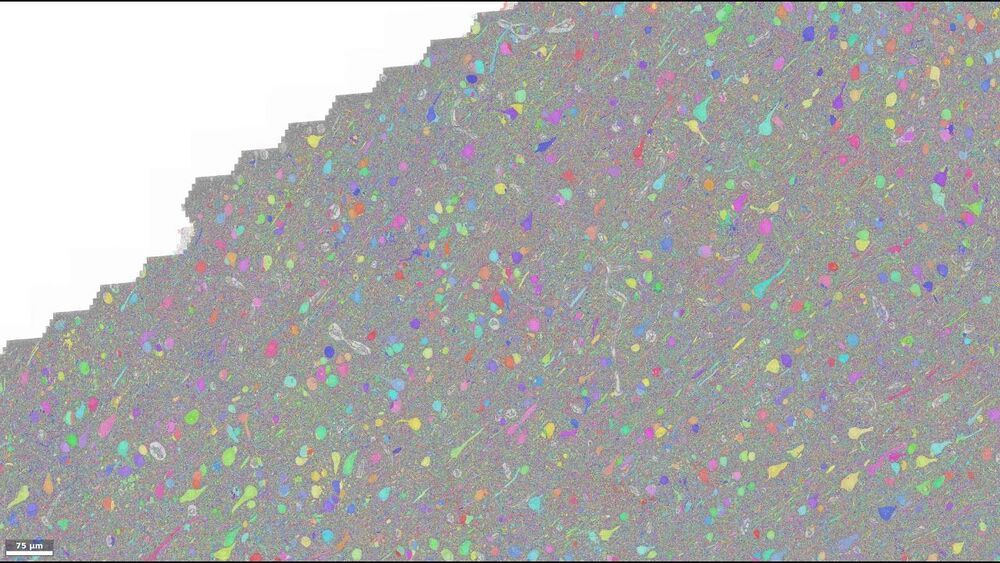The researchers started with a sample taken from the temporal lobe of a human cerebral cortex, measuring just 1 mm3. This was stained for visual clarity, coated in resin to preserve it, and then cut into about 5300 slices each about 30 nanometers (nm) thick. These were then imaged using a scanning electron microscope, with a resolution down to 4 nm. That created 225 million two-dimensional images, which were then stitched back together into one 3D volume.
Machine learning algorithms scanned the sample to identify the different cells and structures within. After a few passes by different automated systems, human eyes “proofread” some of the cells to ensure the algorithms were correctly identifying them.
The end result, which Google calls the H01 dataset, is one of the most comprehensive maps of the human brain ever compiled. It contains 50000 cells and 130 million synapses, as well as smaller segments of the cells such axons, dendrites, myelin and cilia. But perhaps the most stunning statistic is that the whole thing takes up 1.4 petabytes of data – that’s more than a million gigabytes.










Comments are closed.